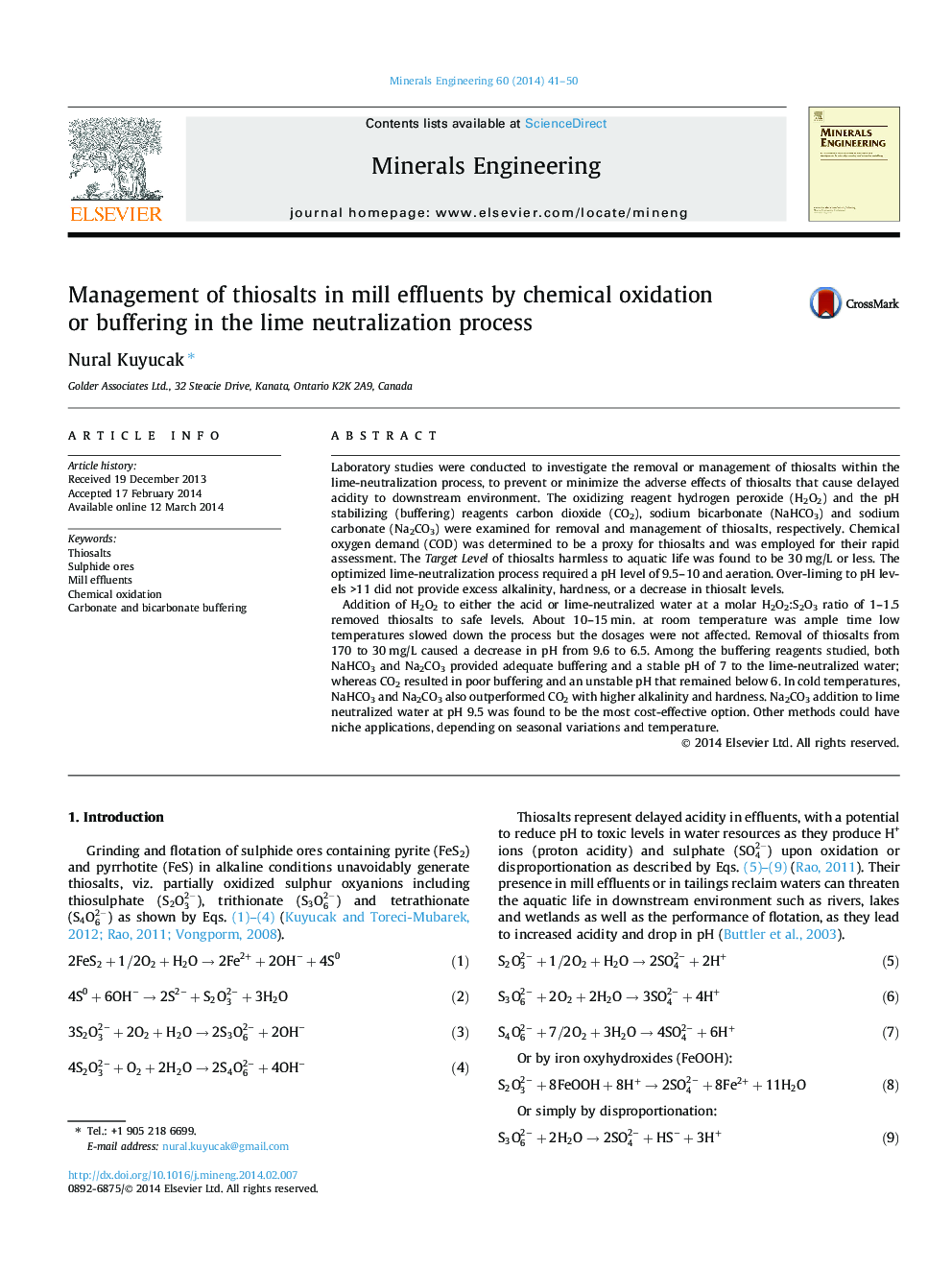| کد مقاله | کد نشریه | سال انتشار | مقاله انگلیسی | نسخه تمام متن |
|---|---|---|---|---|
| 233288 | 465332 | 2014 | 10 صفحه PDF | دانلود رایگان |
• COD measurements can serve as proxy for thiosalts, especially at concentrations below 100 mg/L.
• Optimized lime neutralization raises pH to 9.5–10; necessitates aeration and flocculant use.
• For thiosalts removal, H2O2 addition to acid water outperforms addition to neutralized water.
• NaHCO3 and Na2CO3 provide buffering to neutralized water and maintain pH at around 7.
• Na2CO3 offers the lowest cost for thiosalts management, except at warm temperatures.
Laboratory studies were conducted to investigate the removal or management of thiosalts within the lime-neutralization process, to prevent or minimize the adverse effects of thiosalts that cause delayed acidity to downstream environment. The oxidizing reagent hydrogen peroxide (H2O2) and the pH stabilizing (buffering) reagents carbon dioxide (CO2), sodium bicarbonate (NaHCO3) and sodium carbonate (Na2CO3) were examined for removal and management of thiosalts, respectively. Chemical oxygen demand (COD) was determined to be a proxy for thiosalts and was employed for their rapid assessment. The Target Level of thiosalts harmless to aquatic life was found to be 30 mg/L or less. The optimized lime-neutralization process required a pH level of 9.5–10 and aeration. Over-liming to pH levels >11 did not provide excess alkalinity, hardness, or a decrease in thiosalt levels.Addition of H2O2 to either the acid or lime-neutralized water at a molar H2O2:S2O3 ratio of 1–1.5 removed thiosalts to safe levels. About 10–15 min. at room temperature was ample time low temperatures slowed down the process but the dosages were not affected. Removal of thiosalts from 170 to 30 mg/L caused a decrease in pH from 9.6 to 6.5. Among the buffering reagents studied, both NaHCO3 and Na2CO3 provided adequate buffering and a stable pH of 7 to the lime-neutralized water; whereas CO2 resulted in poor buffering and an unstable pH that remained below 6. In cold temperatures, NaHCO3 and Na2CO3 also outperformed CO2 with higher alkalinity and hardness. Na2CO3 addition to lime neutralized water at pH 9.5 was found to be the most cost-effective option. Other methods could have niche applications, depending on seasonal variations and temperature.
Journal: Minerals Engineering - Volume 60, June 2014, Pages 41–50
